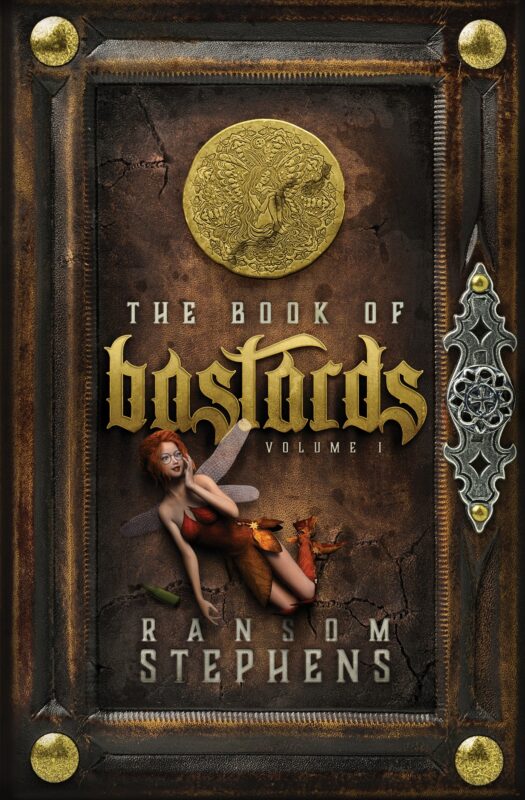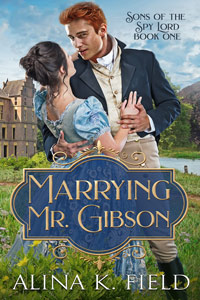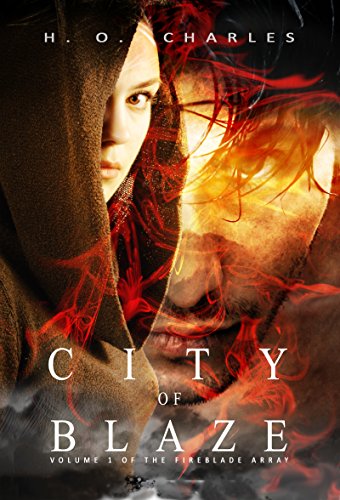Dialogue Tags: How To Kill Off Some Of The Little Buggers
April 10, 2011 by A Slice of Orange in category Archives tagged as Craft, Sharla Rae, writingInstead of: “Stop it!” James said. [He could be angry but then again he could be laughing hard and telling someone to stop it. But if we say: James said, angrily, we’re telling.]
- Try: James sliced the air with his hand. “Stop it!”
- Try: “Stop it!” James held his sides, laughing.
Instead of: “Is she serious?” Amber asked, rolling her eyes.
- Try: “Is she serious?” Amber rolled her eyes and laughed.
Instead of: “Gosh, I love this song,” Jill said, dreamily. [Yikes an ly word]
- Try: “Gosh, I love this song.” Jill closed her eyes and swayed to the music.
Instead of: “Try it, you little weasel,” Jake bellowed. “Just try it.”
- Try: “Jake’s palms slapped the tabletop. “Try it, you little weasel. Just try it.”
Instead of: “You jerk!” Pam screamed, swinging her handbag at him.
- Try: “You jerk!” Pam lashed out at him with her handbag.
The same idea applies to the he or she thought tags.
Example:
Instead of: Can this day get any worse? Jane wondered.
- Try: Jane slumped into the nearest easy chair and kicked off her shoes. Could this day get any worse?
Instead of: If he comes through that door, I’ll brain him, Jill silently vowed.
- Try: If he comes through that door, I’ll brain him. Jill’s fingernails bit into her palms. [Shows determination]
Punctuation can be used to negate tags that indicate strong feelings. To demonstrate what I mean, I’ll use one of my above examples.
“You jerk!” Pam screamed, swinging her handbag at him.
Given there is an exclamation mark after jerk, we know Pam said this with strong feelings. Unless we want her screaming to draw the attention of characters around her, we don’t need to “tell” the reader she screamed. Also, her actions indicate anger and that makes the tag an even bigger overkill. But what if Pam said it under her breath so as not to draw attention? Do we need to say, she whispered? It works. But we could also say: Pam sneered and leaned close, her lips a mere inch from his ear. “Jerk.”
Note: Don’t over use exclamation marks. Again, body language will work just as well.
It must be said, though, that having all the characters on stage constantly nodding, scratching, dancing and throwing things would be just as annoying — not to mention ridiculous — as too many tags. So a few tags are allowed and in some instances they work better for a tight, straight to the point sentence.
I know of no set rules on how many dialogue tags are allowed on a page. The best rule of thumb is to vary your dialogue and cut them when possible. And if you’re still unsure, read the page out loud. Too many tags make the writing sound choppy. They also distract.
The right balance will result in tighter writing that “shows more and “tells” less.
Interesting related websites:
- Three Places Where You Should Tell: http://wordplay-kmweiland.blogspot.com/2011/02/three-places-where-you-should-tell.html
- From an Editor’s POV: http://theeditorsblog.net/2010/12/25/use-and-abuse-of-dialogue-tags/
- The Use and Abuse of dialogue tags: http://www.writing-world.com/fiction/said.shtml
- Avoid Creative Dialogue Syndrome: http://users.wirefire.com/tritt/tip4.html/
POKING DEAD THINGS: Confessions of a Romantically Challenged Author
February 15, 2011 by Rebecca Forster in category The Write Life by Rebecca Forster tagged as bedroom, love, poetry, romance genre, sex, the writing process, writing
9 to 5: Love, Danger and Romance for the 21st century heroine
February 11, 2011 by A Slice of Orange in category Archives tagged as 9 to 5, blogging, books, Confessions of a Podcast Goddess, danger, dangerous, job, professions, romance novels, writing, writing process, writngMeet EVELYN Q. DARLING, Romance Reporter at Large, in her first blog today:
In the past, creating a job for a romantic heroine usually meant she was either a governess, a nurse, or in the early twentieth century, a “typewriter,†better known as a secretary.
Take a letter, Miss Jones…
To all writers of romance novels.
Dear Miss, Ms. or Madam:
It has come to this reporter’s attention that several of you have veered away from writing about governesses in dark, gloomy manor houses and pert, red-cheeked nurses and turned to writing about heroines who carry guns, sport black leather and can take a man down in fifty seconds flat.
Really.
What happened to the days when all a heroine had to do to get her man was flutter her black lace fan and bat her soot-caked eyelashes? (Ample cleavage didn’t hurt either.)
It was so much easier when all a writer had to worry about was how many flounces graced her heroine’s gown or the number of hooks on a corset. (A heroine’s age at marriage also determined the size of her waist: if she wed at 18, she aspired that her waist remained at 18 inches.)
And if all else failed, there was always the “smart†heroine who wrote novels, solved mysteries or planted her delicate boots on foreign soil and showed her moxie by becoming a globe-trotting adventuress.
Sigh. Ah, for the good ole days before our heroines decided they wanted equal rights between the sheets. And on the job.
Now to create the modern heroine, a romance writer has to know the difference between a Glock and a Sig Sauer (the latter sounds like a deli sandwich).
Be able to “street speak†in urban fantasies, suck blood without smudging her lipstick in vampire thrillers and shape-shift into an exotic creature with all her parts intact.
So I’m asking all you romance writers to drop me a line and tell me what “dangerous professions†for a heroine you’ve seen in recent novels or in a novel you’re writing.
What’s new for a heroine in the 21st century in the world of “9 to 5†that you haven’t seen or written about before?
I’ll be eagerly awaiting your answers.
Who knows?
Maybe we can start a new trend: Dangerous heroines in tight corsets and red high heels who live in an abandoned subway tunnel and belong to a secret society of lusty Victorian vampires who feed on handsome firefighters.
Then again, maybe not.
Best regards,
Evelyn Q. Darling
Romance Reporter At Large
The Blonde Samurai: “She embraced the way of the warrior. Two swords. Two loves.â€
Jina Bacarr is also the author of The Blonde Geisha ,Cleopatra’s Perfume, Naughty Paris, Tokyo Rendezvous, a Spice Brief, and Spies, Lies & Naked Thighs
visit my website: http://www.jinabacarr.com/
A Twist of Lemon – Isabel Swift
January 24, 2011 by Isabel Swift in category From Isabel Swift tagged as Cocktails, writingHave you ever had a cocktail? I remember when I was younger being curious about the mystery of mixing drinks, and watching and learning from my father. Cocktails were these magic elixirs, complex, mysterious, alluring. Cooking held little interest for me, but making the right twist of lemon was an art I delighted in learning.
My father enjoyed a martini and took pleasure in the details. The right glass, the balance of tastes, the brand, crushing the ice in his hand with a spoon to get the right size slivers, the perfect chill, the right additions. Everything had impact. Everything mattered. And when I would taste the drink, I had to acknowledge that indeed, it did.
As I recall, we were a lemon twist family. I don’t think I learned of olives or onions until some much later date, though limes and even an occasional mint sprig would find its way into a seasonal libation.
But the lemon twist was what made the average drink exceptional.
It started with finding a firm, fresh lemon, with unblemished substantial skin. Not for us those thin-skinned lime-look-alikes. A small, sharp knife was needed and a lengthwise strip would be cut from stem to stern. A bit of white was acceptable, but you were looking to get a nice 1/4 inch (finger wide) ribbon of the yellow top coat, covered with tiny pores.
You’d take that ribbon and squeeze it over the surface of your completed cocktail, white inside toward you, the outer skin facing the drink like—my father would gleefully explain—you were squeezing blackheads. And oil did indeed emerge from the peel squeezing, creating a film of lemon essence, an oil slick on the surface of the drink.
You would then gently sweep the perimeter of the glass with the outside of the peel and drop it into the drink (twisting the peel would deliver similar oil-inducing pressure, but is less thorough, in my opinion). As my father noted, one didn’t really taste much after the first sip of a drink. The chill, the alcohol, would often take over, so the fact the oil essence didn’t last much beyond that initial sip didn’t matter. What mattered was that first sip was exquisite, sparkling, aromatic, heady.
However my experience with almost all ordered cocktails is dreadfully disappointing in this area. Most bartenders take the words “with a twist” at face value, and some variety of a curlicue of lemon appears, extracted by an assortment of designer bar implements and it sits decoratively on the edge of your drink. Useless as teats on a bull.
The whole point of a twist of lemon is to add a touch of fresh lemon oil to your drink, for reasons of taste. Not solely to stick a piece of lemon rind in your drink! But almost everyone misses the point. They make a living doing this, and they still don’t have their eye on the donut, the key deliverable, the “beef” and not the bun.
Missing—or just not understanding—the point is not a new issue. It can be a problem for aspiring writers too, who may dutifully following the letter Vs the spirit of instructions. Doing something without really understanding why it needs to be done, what value it offers, can lead you astray. It’s often why editorial instructions, tip sheets, etc. can sometimes be non-existent, minimalist or vague—because the requesters know that some information can mislead instead of inform.
In fact, information can distract you from focusing on the point. As an adviser, you really want the creator to understand that it’s all about achieving the goal: creating the feeling, having the impact, making the experience happen for the recipient. Not (necessarily) about taking each step correctly, following rules, or delivering on the surface requirements, but not the substance. Instructions or information can be helpful, but when it comes down to it, the question will always be: is it delicious? Do I want to keep drinking (or reading, or whatever).
So if you’re having trouble making your text behave, now at least now you’ll know what to add to that beverage you’re going to be fixing yourself!
Do it with a twist.
0 0 Read moreWhat is a Novel? by Jina Bacarr
September 11, 2010 by A Slice of Orange in category Archives tagged as author, bird, Confessions of a Podcast Goddess, Italian, Italy, Jina Bacarr, novels, perfume, scent, Venice, writingA novel is like my friend, Uccello.
Writing is a solitary profession and taking a break from sitting at my computer is important to me. I like to walk. Every day I walk through a park on my way to the beach, smelling the flowers, enjoying the shade of the trees and listening to the birds singing.
One bird in particular captured my attention. He doesn’t sing better than the others, he’s not prettier, and he doesn’t fly in a soaring pattern. But we’ve formed a bond, Uccello and me.
I call him “uccello” (bird in Italian) because he reminds me of the birds singing outside my hotel window in Venice. I fell in love with the magical city with all its sights and smells when I spent time in Italy speaking and performing about Body & Eros at La Biennale dance festival.
Watch a short clip of the view from my window in Venice, Italy.
Seeing Uccello every day takes me back to Venice and reminds me of the evocative perfume I inhaled there.
I learned to recognize Uccello from the other birds, little things about the charcoal grey bird that caught my eye. He has a little white belly that wiggles when he preens himself like a de’ Medici grand duke and his chirping is short and musical like breathy notes on a flute. He follows me through the park, flitting from one perch to another, poking his head around to see if I’m dallying.
I’ve gotten to know his idiosyncrasies, like how he chirps twice when he sees me, then how he likes to show me what path to take by flying in front of me. The park has many winding pathways and I look forward to seeing where he’ll lead me on my walk each day.
To me, a novel is like Uccello. Something about it attracts your eye–it could be the title or the cover–you get closer, open up the book and it takes you on a journey. As you follow its winding paths, you breathe in its uniqueness. That’s part of the fun for me. I like to inhale the scent of the story.
It’s not something you can smell in a physical way, but it evokes an odoriferous response in you that makes you aware of the scents the author has created in their world, whether it’s fragrant roses, the salty sea, cinnamon, oil, pine cones, or the smell of sex.
The next time you read a novel, think about what you smell. It may surprise you.
I’m off to see Uccello.
Want to come along? It’s easy.
Open a novel and join us.
Best,
Jina
The Blonde Samurai: “She embraced the way of the warrior. Two swords. Two loves.â€
Jina Bacarr is also the author of The Blonde Geisha ,Cleopatra’s Perfume, Naughty Paris, Tokyo Rendezvous, a Spice Brief, and Spies, Lies & Naked Thighs
visit my website: http://www.jinabacarr.com/
Affiliate Links
A Slice of Orange is an affiliate with some of the booksellers listed on this website, including Barnes & Nobel, Books A Million, iBooks, Kobo, and Smashwords. This means A Slice of Orange may earn a small advertising fee from sales made through the links used on this website. There are reminders of these affiliate links on the pages for individual books.
Search A Slice of Orange
Find a Column
Archives
Featured Books
THE BOOK OF BASTARDS
Welcome to The Gold Piece Inn, where you can drink, gamble, and play! Or hide.
More info →MARRYING MR. GIBSON
She won't be forced into marriage to a nobleman's by-blow. He won't be trapped into marriage by a father he's never known.
More info →
Newsletter
Contributing Authors
Search A Slice of Orange
Find a Column
Archives
Authors in the Bookstore
- A. E. Decker
- A. J. Scudiere
- A.J. Sidransky
- Abby Collette
- Alanna Lucus
- Albert Marrin
- Alice Duncan
- Alina K. Field
- Alison Green Myers
- Andi Lawrencovna
- Andrew C Raiford
- Angela Pryce
- Aviva Vaughn
- Barbara Ankrum
- Bethlehem Writers Group, LLC
- Carol L. Wright
- Celeste Barclay
- Christina Alexandra
- Christopher D. Ochs
- Claire Davon
- Claire Naden
- Courtnee Turner Hoyle
- Courtney Annicchiarico
- D. Lieber
- Daniel V. Meier Jr.
- Debra Dixon
- Debra H. Goldstein
- Debra Holland
- Dee Ann Palmer
- Denise M. Colby
- Diane Benefiel
- Diane Sismour
- Dianna Sinovic
- DT Krippene
- E.B. Dawson
- Emilie Dallaire
- Emily Brightwell
- Emily PW Murphy
- Fae Rowen
- Faith L. Justice
- Frances Amati
- Geralyn Corcillo
- Glynnis Campbell
- Greg Jolley
- H. O. Charles
- Jaclyn Roché
- Jacqueline Diamond
- Janet Lynn and Will Zeilinger
- Jeff Baird
- Jenna Barwin
- Jenne Kern
- Jennifer D. Bokal
- Jennifer Lyon
- Jerome W. McFadden
- Jill Piscitello
- Jina Bacarr
- Jo A. Hiestand
- Jodi Bogert
- Jolina Petersheim
- Jonathan Maberry
- Joy Allyson
- Judy Duarte
- Justin Murphy
- Justine Davis
- Kat Martin
- Kidd Wadsworth
- Kitty Bucholtz
- Kristy Tate
- Larry Deibert
- Larry Hamilton
- Laura Drake
- Laurie Stevens
- Leslie Knowles
- Li-Ying Lundquist
- Linda Carroll-Bradd
- Linda Lappin
- Linda McLaughlin
- Linda O. Johnston
- Lisa Preston
- Lolo Paige
- Loran Holt
- Lyssa Kay Adams
- Madeline Ash
- Margarita Engle
- Marguerite Quantaine
- Marianne H. Donley
- Mary Castillo
- Maureen Klovers
- Megan Haskell
- Melanie Waterbury
- Melissa Chambers
- Melodie Winawer
- Meriam Wilhelm
- Mikel J. Wilson
- Mindy Neff
- Monica McCabe
- Nancy Brashear
- Neetu Malik
- Nikki Prince
- Once Upon Anthologies
- Paula Gail Benson
- Penny Reid
- Peter Barbour
- Priscilla Oliveras
- R. H. Kohno
- Rachel Hailey
- Ralph Hieb
- Ramcy Diek
- Ransom Stephens
- Rebecca Forster
- Renae Wrich
- Roxy Matthews
- Ryder Hunte Clancy
- Sally Paradysz
- Simone de Muñoz
- Sophie Barnes
- Susan Squires
- T. D. Fox
- Tara C. Allred
- Tara Lain
- Tari Lynn Jewett
- Terri Osburn
- Tracy Reed
- Vera Jane Cook
- Vicki Crum
- Writing Something Romantic
Affiliate Links
A Slice of Orange is an affiliate with some of the booksellers listed on this website, including Barnes & Nobel, Books A Million, iBooks, Kobo, and Smashwords. This means A Slice of Orange may earn a small advertising fee from sales made through the links used on this website. There are reminders of these affiliate links on the pages for individual books.










































